

Today I’m going to make a jig that will allow me to sharpen almost all of my woodturning chisels. I’ve sharpened them a couple of times by hand, but the result was not as good as it should have been.
I’ll use the lathe itself and the grinding wheel I made a few months ago. To design the jig I took the length of all my chisels into account. Some users have asked me if it’s dangerous to press the tools against the wheel while it’s turning due to the wheel’s canal. After lots of testing I haven’t had any problems, as long as the edge of the tool is above the wheel’s axis and you push gently. At any rate, it would be a good idea to install a switch so that you can reverse the lathe’s motion when necessary.
Lathe Chisel Sharpening Jig Plans
How to make the sharpening jig:


First I cut all the hard plywood pieces with the table saw and make an adjustment groove with the router table in several runs. I mark and cut the main piece again to make it more comfortable when sharpening.
Now I glue a piece of plywood to the bottom. It will let me place the jig on the lathe more accurately. I also drill another piece of plywood to secure the jig on the lathe.
With the bandsaw I cut the piece the chisel handles will rest on, which also turns them if necessary. I place screws on its sides and drill holes to slide it and lock it on the jig. I’ll also make a knob out of birch plywood.
Now I’ll change the grinding wheel sandpaper. I’ll use P240, which I think is enough to sharpen the chisels. We could also build a second wheel with coarser grit for chisels whose cutting edge is too deformed. Mounting the sandpaper on the wheel is easy. After cutting it to size, we only have to put it on the wheel’s canal and tighten the screw.
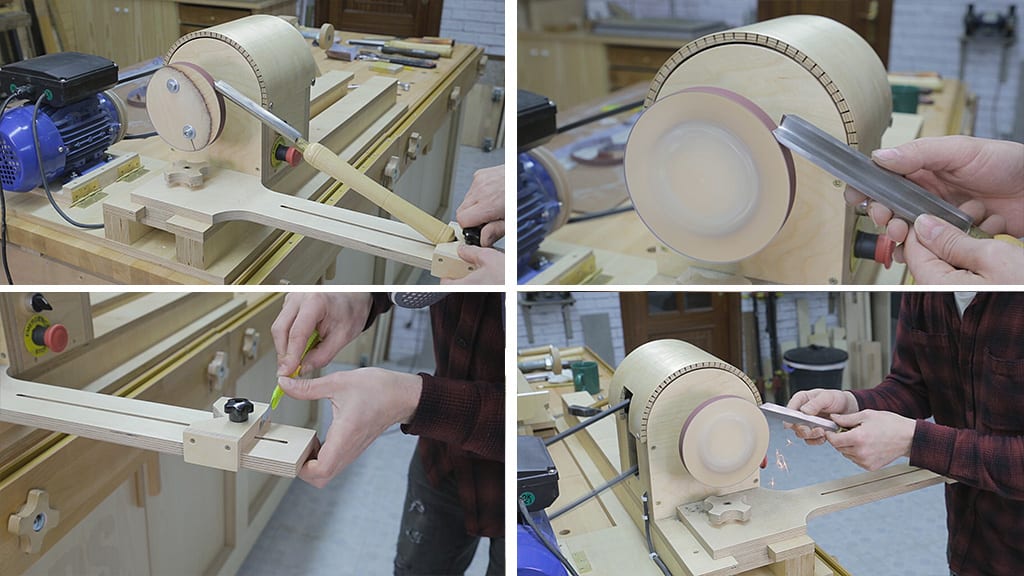

We can see the state of this roughing gouge’s cutting edge after trying to sharpen it by hand. I’ll try to straighten the edge with the jig. For this kind of sharpening jobs, I think 800 rpm would be enough. First I have to find the right angle and push the jig’s support piece. The sharpening is smooth and little by little I can restore the edge to its proper shape. Besides, the metal barely heats up, so I won’t have to cool it down with water.
I’m going to mark on the jig the position of each chisel I have to sharpen to make future sharpenings easier. I’ll put a number in each chisel and its corresponding position on the jig. Now I set the jig again and repeat the same steps with the rest of the chisels, whether their edges are round or flat.
Since I need a new handle for a hammer I have in my workshop, I’ll test out one of the chisels I’ve just sharpened. I put a piece of hard maple wood on the lathe and shape it, definitely cuts much better. This jig is going to save me a lot of time and work in the future, so I’m glad I spent a day building it.
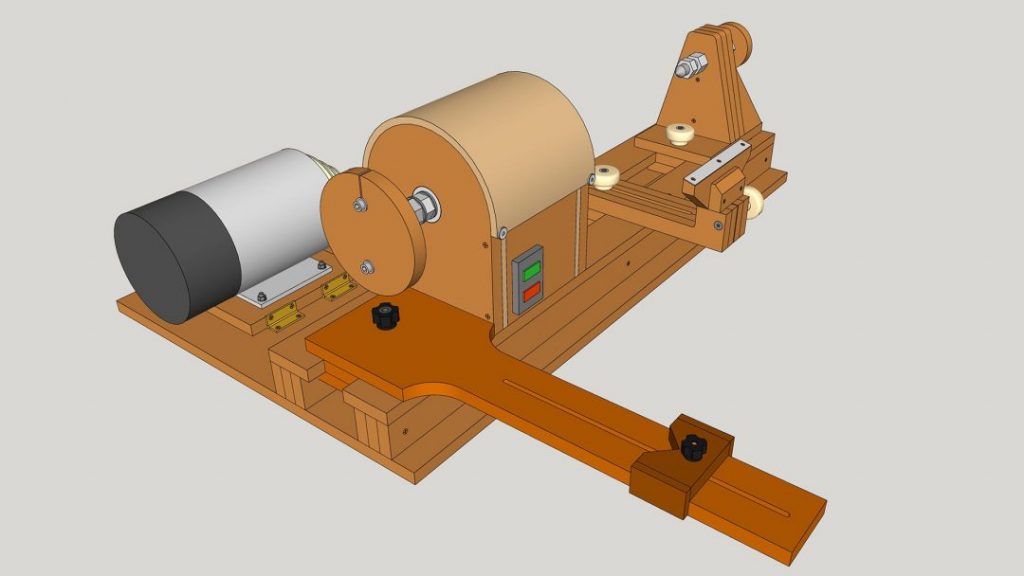

If you would like to support my channel, you can buy and download the plans from my website.
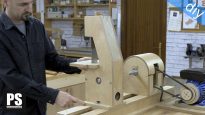

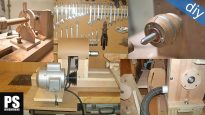
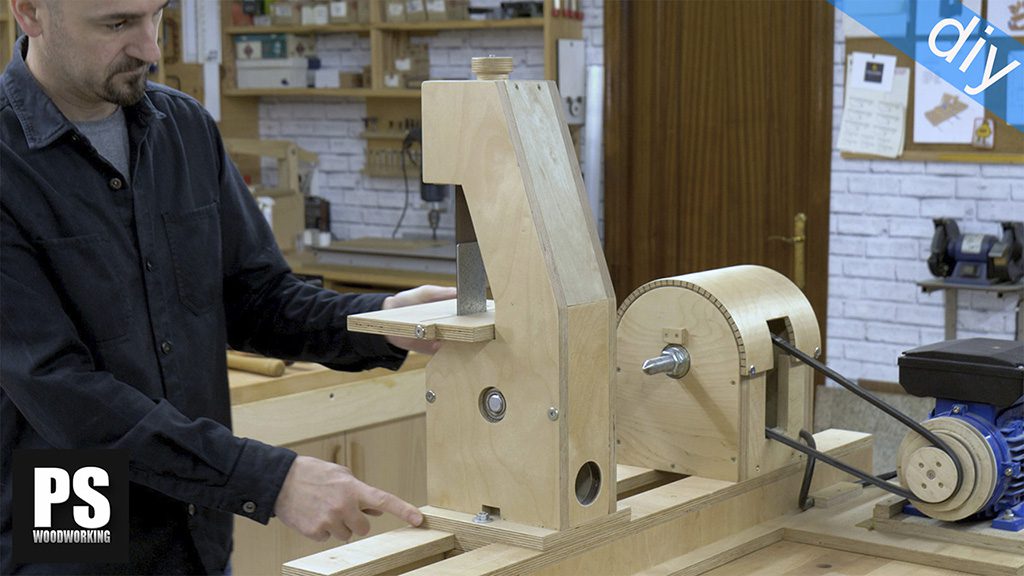
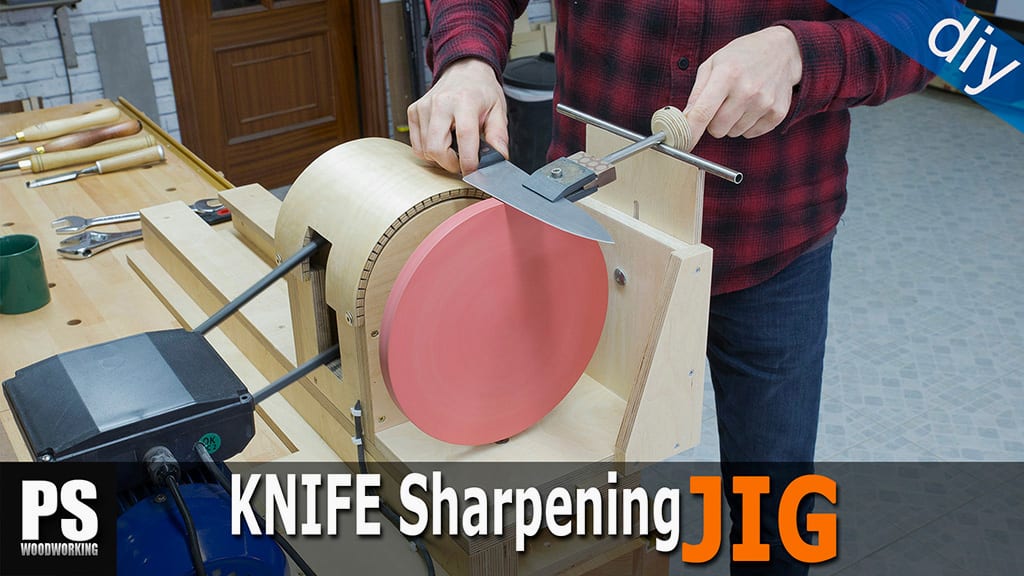

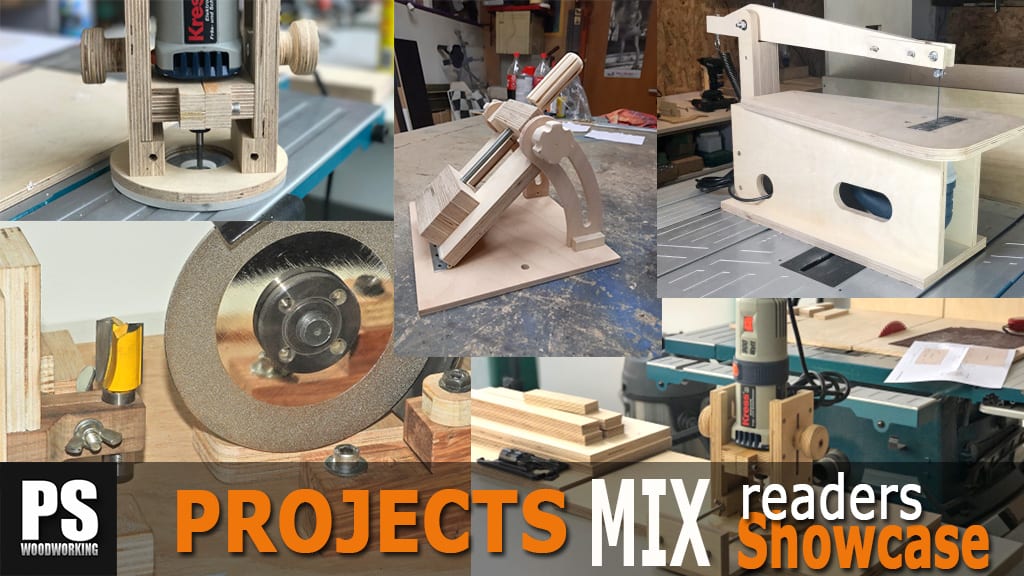

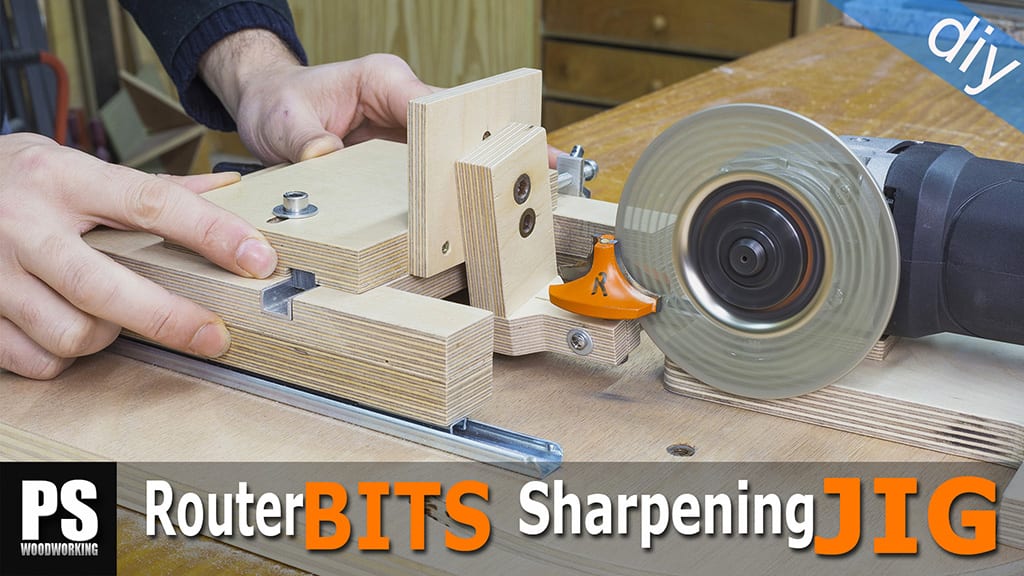
Shouldn’t the disc rotate the other way ? Away from the cutting surface, else there is a chance of nicking the chisel
hi Anil, after lots of testing I haven’t had any problems, as long as the edge of the tool is above the wheel’s axis and you push gently. At any rate, it would be a good idea to install a switch so that you can reverse the lathe’s motion when necessary.
You can use a sharpie marker on the turning tool’s cutting surface to see what you ground away. Coat it first then grind. Super easy to see, especially if you sharpen your tools a lot.
thanks!